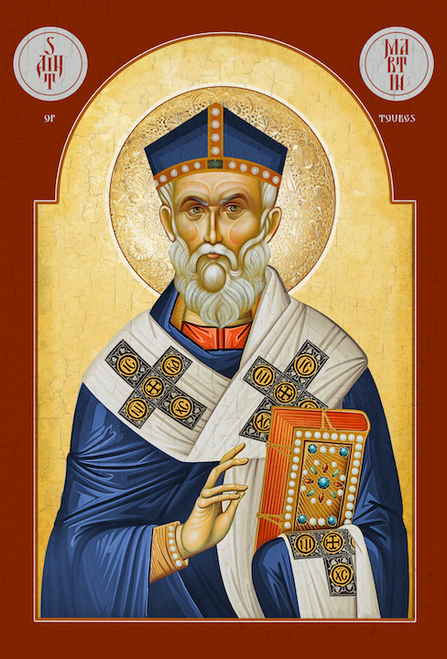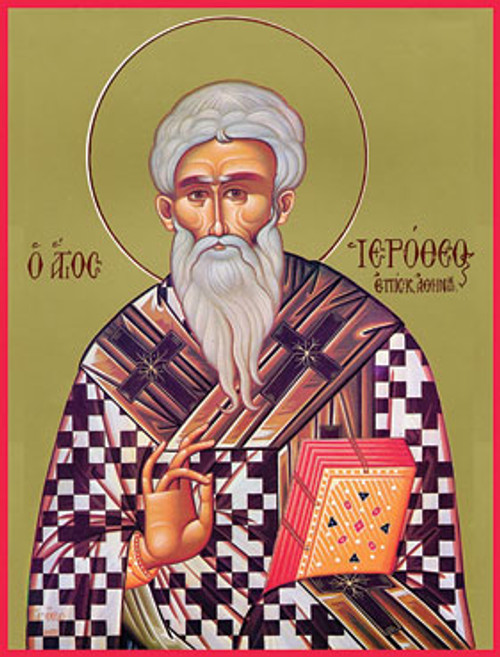St. Martin of Tours (+November 8, 397)
Commemorated November 12
St. Martin was Bishop of Tours, whose shrine in France became a famous stopping-point for pilgrims on the road to Spain. He was born in what is now Hungary, and spent much of his childhood in Italy and lived most of his adult life in France.
St. Martin was born in 316 or 336 AD in SavariaHungary). His father was a senior officer in the Imperial Horse Guard, a unit of the Roman army, stationed in northern Italy, where Martin grew up.
At the age of ten, he attended the Christian church against the wishes of his parents, and became a catechumen. As the son of a veteran officer, Martin at fifteen was required to join a cavalry and at 18, he was stationed at what is now Amiens, France.
While St. Martin was a soldier in the Roman army and stationed in modern-day France, he had a vision, which became the most-repeated story about his life. One day as he was approaching the gates of the city of Amiens, he met a scantily clad beggar. He impulsively cut his military cloak in half to share with the man. That night, Martin dreamed of Jesus wearing the half-cloak he had given away. He heard Jesus say to the angels: "Martin, who is still but a catechumen, clothedme with this robe." The dream confirmed Martin in his piety, and he was baptised at the age of 18.
Just before a battle in what is now Worms, Germany, St. Martin switched his allegiance to Christ, "I am the soldier of Christ: it is not lawful for me to fight." He was charged with cowardice and jailed, but in response to the charge, he volunteered to go unarmed to the front of the troops. His superiors planned to take him up on the offer, but before they could, the invaders sued for peace, the battle never occurred, and St. Martin was released from military service.
St. Martin then went to Tours where he became a disciple of Hiliary of Poitiers, who opposed theArianismof the Imperial Court. When Hilary was forced into exile, Martin returned to Italy. Having heard in a dream to revisit his home, he did so and converted his mother and some other persons; his father he could not win.
He took sides against the Arians with so much zeal that he was publicly scourged and forced to leave. He was confronted by the Arian archbishop of MilanAuxentius, who expelled him from the city. Early sources relate that St. Martin sought shelter on the island then called Gallinaria, now Isola d'Albenga, in the Ligurian Sea, where he lived the solitary life of a hermit. With the return of Hilary to his seein 361, St. Martin joined him and established a hermitage nearby, which soon attracted converts and followers.
In 371 St. Martin becamebishop of Tours, where he impressed the city with his demeanor. According to one version, he was so unwilling to be made bishop that he hid in a barn full of geese, but their cackling at his intrusion gave him away to the crowd.
St. Martin withdrew from the city to live in Marmoutierwhere he founded a monastery. Once a year, he visited each of his parishes, traveling on foot, or by donkey or boat. He continued to set up monastic communities, and extended the bounds of his episcopate from Touraine to such distant points as Chartres, Paris, Autun, and Vienne.
St. Martin died in Candes-Saint-Martin, Gaul(central France) in 397.







